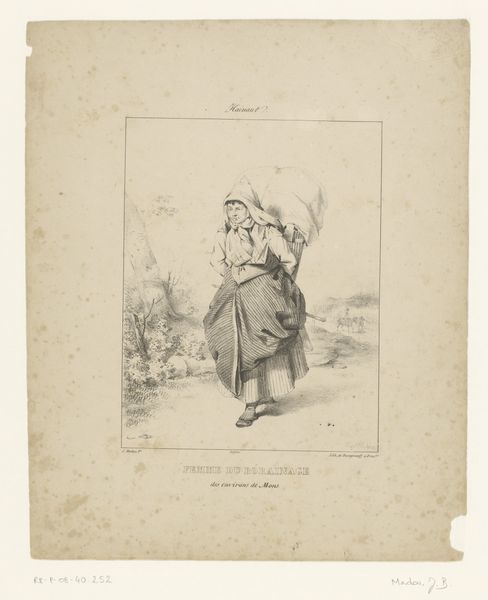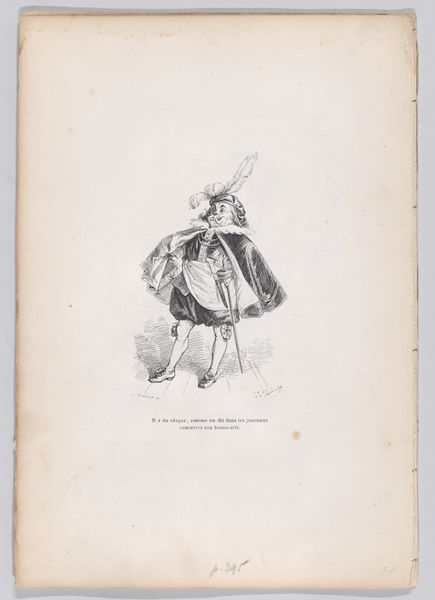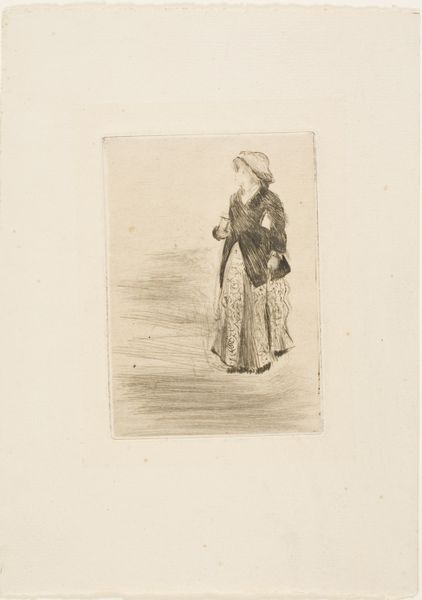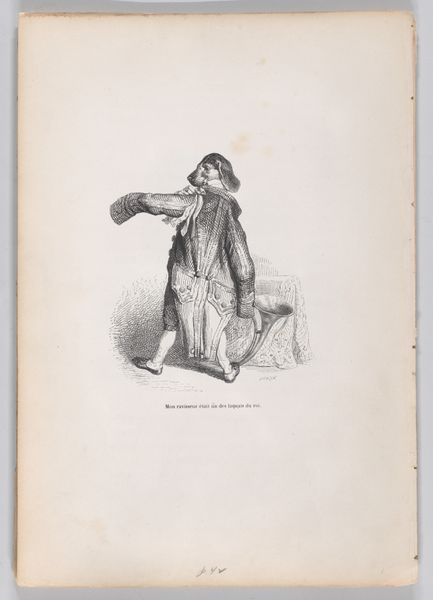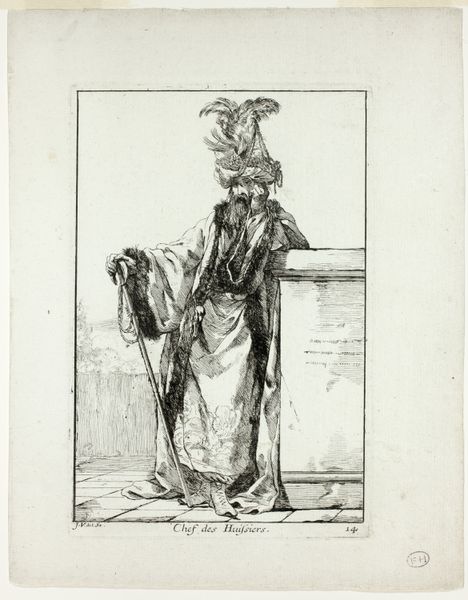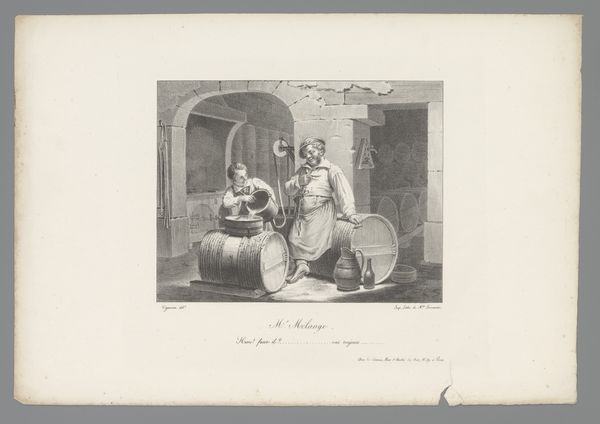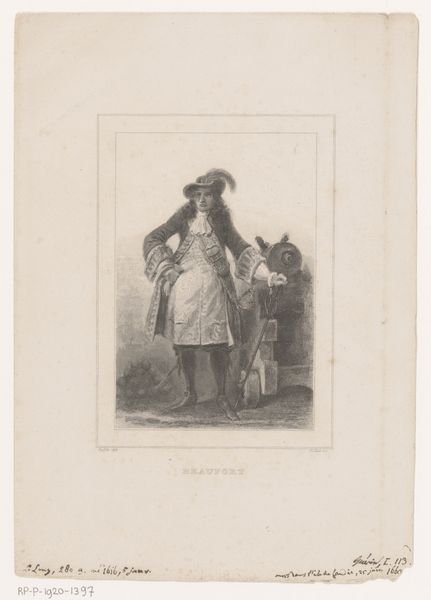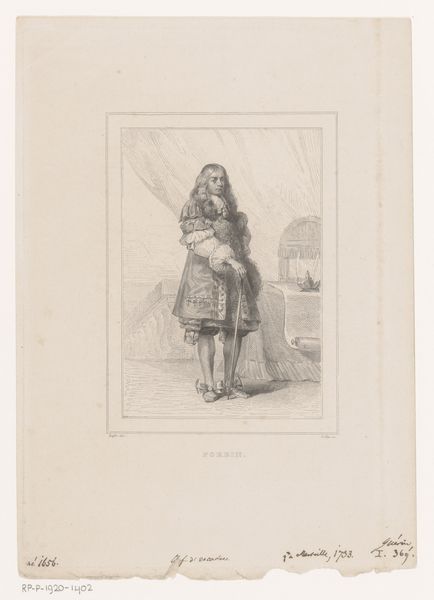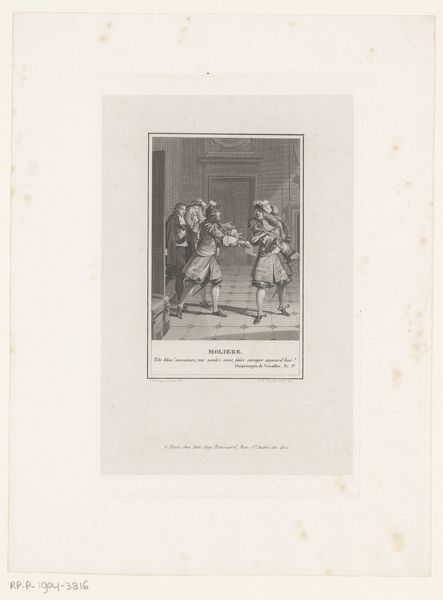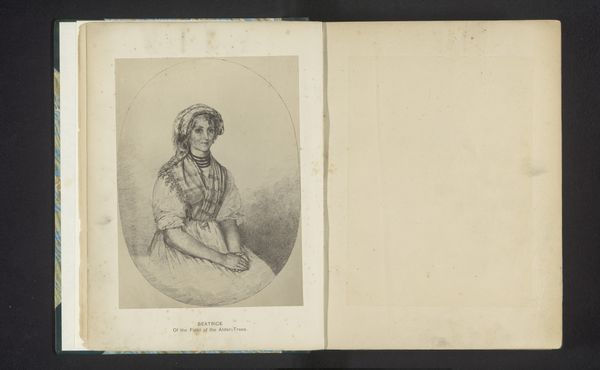
drawing, lithograph, print, paper
#
portrait
#
drawing
#
lithograph
# print
#
figuration
#
paper
#
romanticism
Dimensions: 161 × 115 mm (image); 298 × 222 mm (sheet)
Copyright: Public Domain
Curator: This is "Costume Écossais," a lithograph from 1834 by Paul Gavarni. What strikes you first about it? Editor: Well, immediately, the subject’s pose feels performative. She's leaning casually on that chair, but everything about her elaborate dress and adornments feels deliberately staged. There's a tension there, almost a sense of societal constraint masquerading as nonchalance. Curator: Exactly! Gavarni captured a fascinating moment. These were prints intended for mass consumption, offering glimpses into Parisian society, but with a playful twist. It's not just a record of fashion. It feels more like an invitation into a whimsical theatre. What is “Scottish” about this, though? Is she a woman, or is she meant to suggest the costume from the opera of the period, or a fancy dress party theme? Editor: You're spot on. The Scottish theme is more aspirational than factual. It's pulling from the romanticised view of Scottish identity popular at the time. Think tartan fever, fed by literature and opera, rather than any real ethnographic interest. Curator: And look at the line work! Gavarni creates such detail, but with an economy of means, and with a lightness, as if you just stumbled across a beautiful reverie and he made the dream. Editor: And that’s crucial: the lithographic medium itself enabled him to disseminate this ideal, and participate, really, in shaping and reflecting these popular imaginaries of femininity, fashion and foreign culture within a quickly modernizing, bourgeois society. Curator: Absolutely, and she knows that. She’s aware of being observed, an actor in this daily play of bourgeois display. But there's something melancholy about it, a fragility beneath all the feathers and finery. A bittersweetness maybe, if that’s a thing? Editor: Yes! The “bittersweetness” encapsulates the layers. It's a critique and a celebration of performance and dress as markers of identity. I can also see the woman being empowered, reclaiming, appropriating ideas and ideals of the Scottish highlands. Curator: Mmh, Gavarni gives us a whole society distilled into a moment, which I’ve never really looked at until just now. And I think there is still a great mystery about her… what did it all mean? And what does the artwork suggest to me in our day? Editor: Always that question – that conversation across time, right? Which this woman makes it so tantalizing, inviting us to consider gendered identity and cultural performance. That is what interests me. Thank you for guiding us to consider Gavarni’s mystery and our present.
Comments
No comments
Be the first to comment and join the conversation on the ultimate creative platform.
